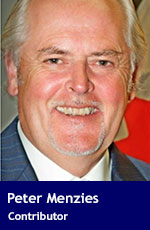 Many years ago, after a particularly chaotic day in a newsroom, a couple of colleagues and I shared a deep breath, a relieved laugh and shook our heads in dismay.
Many years ago, after a particularly chaotic day in a newsroom, a couple of colleagues and I shared a deep breath, a relieved laugh and shook our heads in dismay.
“If only they knew,” one of us said of the readers we sought to serve, “… if only they knew.”
I decided then that If Only They Knew would be the title of my first book, a sort of Tales from the Crypt regarding the inner workings of those, at the time, large and chaotic newsrooms. The aim was not so much to debunk the romantic mythology of journalism as depicted in recent movies such as Spotlight and The Post but to explain that at the times we failed, it had a lot more to do with our competence than it did with any conspiracy. The fact is, most of us just weren’t smart enough, evil enough or equipped with the time required to pull off the latter.
But alas, I appear to have outlived the newsroom to which I refer. My son tells me he looks forward to trying to explain to his children what a newspaper was.
On the bright side, I’m confident that another of my long-term employers – the Canadian Radio-television and Telecommunications Commission (CRTC) – will still be marching along vigorously long after I’ve moved on to the next dance craze. Perhaps the CRTC would make a better subject for a book about if only they knew how decisions were made.
Because, remarkably for a public institution that on an almost daily basis makes decisions about the communications tools people use, the content they consume and the price they pay for it, the place remains shrouded in mystery.
While a decision-maker there, I once asked why our votes weren’t recorded and made public, or why minutes weren’t kept of decision meetings and posted on the website. We were, after all, public appointees, spending public dollars to make decisions intended to serve the public interest. Surely the public had a right know who voted for what and what the nature of the debate, if any, was that took place prior to that vote.
The most coherent explanation I got was that this might place “too much pressure” on the commissioners. My view was clearly not one that had a lot of support and there may be better reasons than the one I heard. But my response to that one is this: Making CRTC decisions is inside work that doesn’t involve heavy lifting. It pays $170,000-plus a year with full benefits. There should be pressure. There should be accountability.
The public should know, for instance, who among the commissioners most and least frequently asks questions regarding decisions recommended by public servants. They should know – and increased transparency was a big feature in the current government’s mandate – who voted in favour and who voted against which decisions, with perhaps some indications as to why. (Wanting to be popular at parties is not a good reason.)
The public and other stakeholders should know which commissioners can be expected to consistently agree with actions recommended by staff and which can be counted upon to challenge.
It’s not hard to do.
The same should go, for that matter, for other public institutions governed by public appointees, although there may be valid reasons for exceptions in the case of, for instance, parole boards.
There have been some awkward genuflections in the direction of accountability at the CRTC in recent years. Those, however, appear to do little other than direct attention at the non-discretionary costs of travel between the locations of regional commissioners and Ottawa, while leaving undisclosed the discretionary travel expenses of senior public servants.
No one in Donald Trump’s America has any doubt how and why members of the Federal Communications Commission vote on decisions regarding the public good. There’s no good reason why Canadians shouldn’t have access to the same transparency.
If they did, they probably wouldn’t be as afraid of the regulator as so many of them are.
Troy Media contributor Peter Menzies is former publisher of the Calgary Herald and a past vice-chair of the CRTC.
The views, opinions and positions expressed by columnists and contributors are the author’s alone. They do not inherently or expressly reflect the views, opinions and/or positions of our publication.


